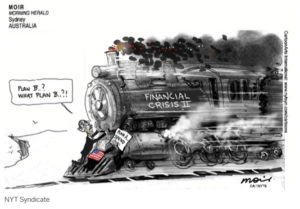
The Prescription
The doctor-patient relationship is well understood. A patient will either go see the doctor for a flu shot before getting the flu or will see the doctor for medication after getting the flu. In either case, the patient understands the risk is contracting the flu, that they are susceptible to it, and they must seek out risk-reduction methods to prevent the flu from arising or getting worse. The doctor is never expected to predict with a 100% certainty when or if a patient gets the flu. The physician is expected to diagnose the patient’s current health status and administer preventative vaccines to reduce the risk of contracting the flu, or other medicines to reduce the symptoms if the flu is contracted.
The financial advisor-client relationship is not as clear. The client goes to the financial advisor in hopes that the advisor will be able to predict a positive or negative outcome in the stock market. The expectations the client experiences from an advisor attempting to predict outcomes begins to rise and fall with the ups and downs of the stock market. What the client never understands is that their money has had the flu all along and their financial advisor never gave them a flu shot.
The ups and downs of the stock market caused by a trade war or earnings event is the “flu”, otherwise known as randomness. Random events occur daily and whether they are the root cause of move in the stock market is impossible to forecast and determine. Clients expecting their financial advisor or money manager to forecast the future is like expecting your doctor to determine what day and time you will contract the flu. Randomness, or volatility, will occur regardless just as the flu season is inevitable. A financial advisor that understands their capabilities will not try to forecast the future but will try to reduce the volatility that a client’s investments are exposed.
The initial “flu shot” from a financial advisor starts with diversifying a stock portfolio by investing in all 11 sectors of the S&P 500, using cash and bonds, and using derivatives in stocks if the portfolio contains individual securities. These actions will allow a client to reduce beta, otherwise known as systematic risk or stock market risk, and delta, the price movement of individual securities to an extent while in pre-retirement or the saving phase. The second “booster shot” is administered to ensure not all the client’s assets are exposed to market sequence of returns risk and the client’s assets will be ready to spend in retirement. It would not be a complete financial plan for a client to invest money in the stock market for 20-30 years without having a clue as to spend the assets safely, so they don’t outlive their investments. Subnani Investment Research, LLC administers both “flu” shots for their clients as soon as they begin investing. Schedule a free consultation today to get the “flu shot.”







